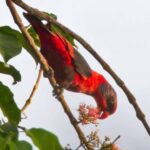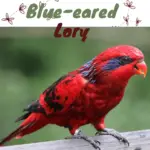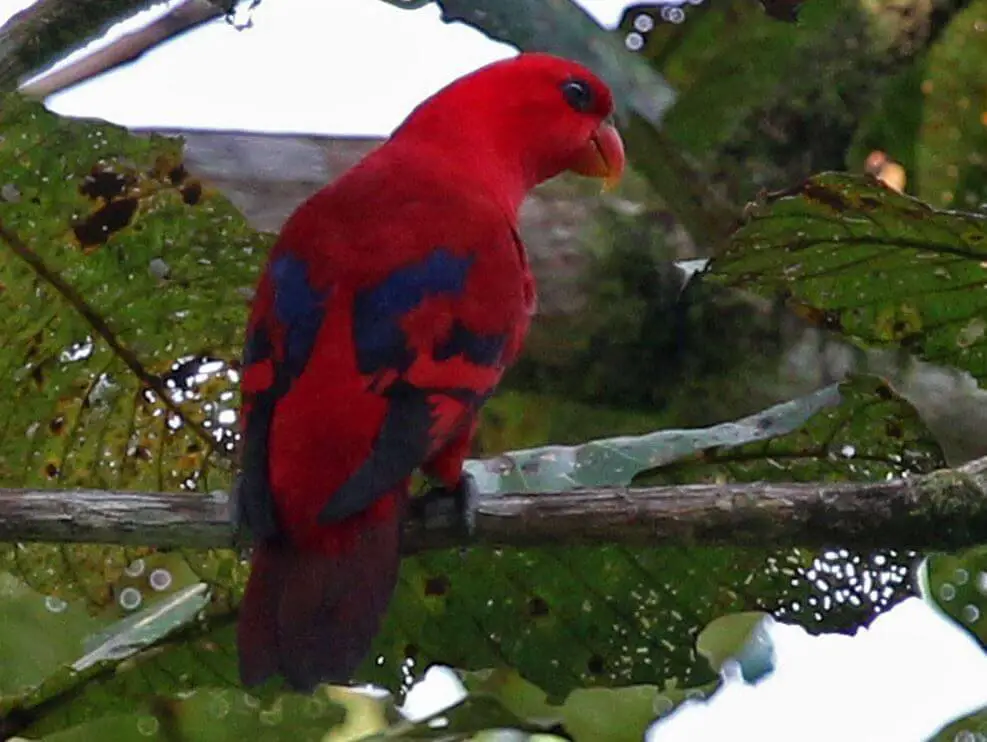Red Lory 31 cm. Red; bill orange to orange-yellow; bare orbital ring dark grey; wing-coverts and secondaries tipped black; primaries black with a red speculum;
lower tertials and under tail-coverts blue; tail dull red; legs dark grey. Immature duller, with less blue. Race cyanothora darker.
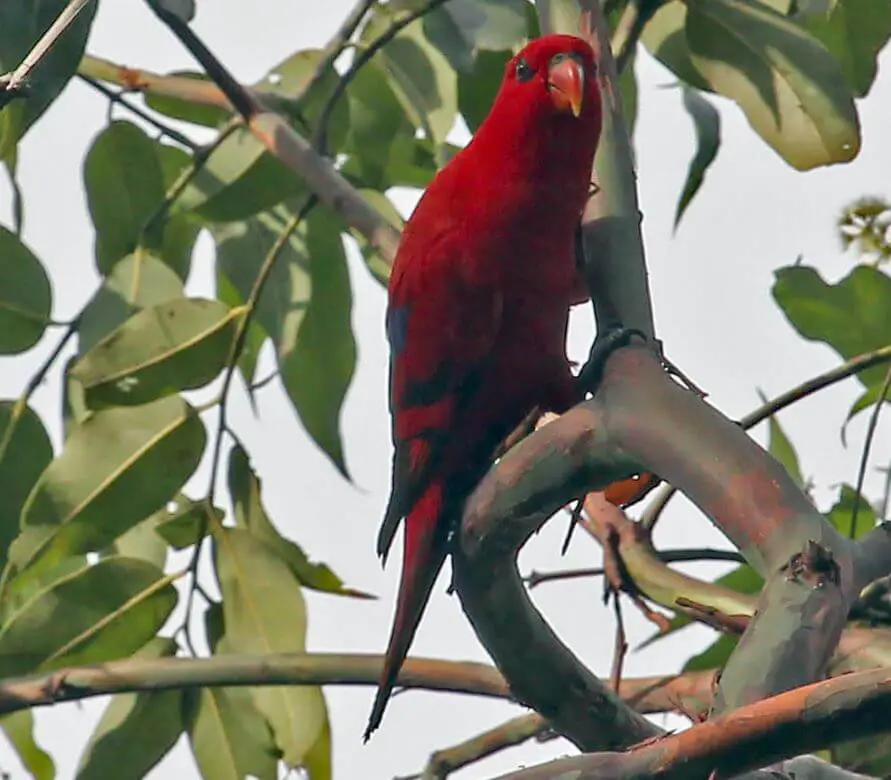 red lorry yellow lorry
red lorry yellow lorry
Systematics History
Editor’s Note: This article requires further editing work to merge existing content into the appropriate Subspecies sections. Please bear with us while this update takes place.
Name bornea was replaced for a time recently by Rubra, but new evidence concerning nutritional effects on plumage now explains anomalies in the plate from which bornea was described.
The form described as E. goodfellowi seems likely to represent immature of present species introduced to Obi. Race name cyanonotha misspelt in HBW as cyanothorus.
Various populations have been awarded separate races on basis of purported size differences, but variability within these populations, or evidence of clines, suggests that size cannot be used as a subspecific character.
Proposed races bernsteini (Kai Is) and rothschildi (Seram) is invalid, as differences are due to clinal variation. Two subspecies were recognized.
Subspecies
Small introduced population (unknown subspecies) in Taiwan.
Eos bornea bornea Scientific name definitions
Distribution
Eos bornea cyanonotha Scientific name definitions
Distribution
Distribution
Editor’s Note: Additional distribution information for this taxon can be found in the ‘Subspecies’ article above. In the future, we will develop a range-wide distribution article.
Habitat
Lowland forest, mangroves, secondary forest, and coconut plantations, chiefly in coastal areas, but up to 1630 m on Seram and up to 1800 m on Buru.

red lory parrot
Movement
Small groups frequently cross between islands in the Kai group. Seasonal fluctuations on Ambon have been claimed, with the highest numbers Apr–Jul, but recent evidence does not support this idea.
Diet and Foraging
Birds have been seen feeding in flowering Eugenia and Erythrina trees; remains of small insects found in stomachs. Observed feeding together with E. semilarvata.
Sounds and Vocal Behavior
Utters mostly short, distinctly nasal, screeches such as “kyek!” or “kenk”, sometimes alternated with short high-pitched staccato notes. Also a double-noted “kye-kek” and salvo-like chatters.
SOURCE: SUBBALAKSHMI SASTRY
Breeding
Nest-site prospection noted Aug–Sept; nestlings, Dec. Nest in hollow high in the old tree.
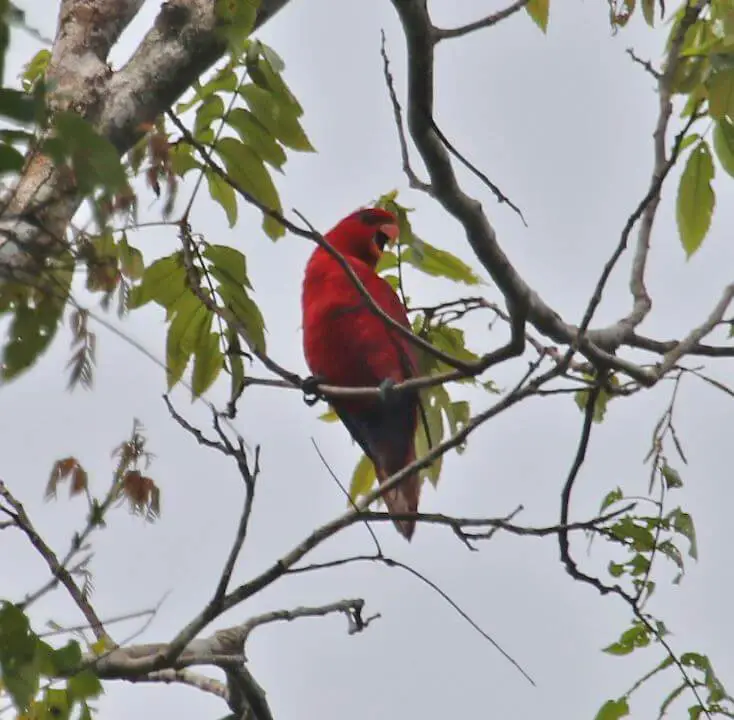
red lory price
Clutch size unknown, but egg size (in captivity) 29·8–31·2 mm × 23–24·6 mm. The nestling period in captivity is 7–9 weeks.
SOURCE: gruvmaster08
Conservation Status
Not globally threatened. CITES II. A BirdLife “restricted-range” species. Common to abundant, often in flocks up to 30. However,
also heavily traded: international trade, 1985–1990, averaged 6538 birds per year, the USA being the main importer, and a general trend of declining exports may suggest declining numbers in the wild,
a possibility which needs investigation. Certainly now scarce on Ambon and in Kai Is and in Seram only common in remote areas; the commonest parrot on Buru, late 1989.

